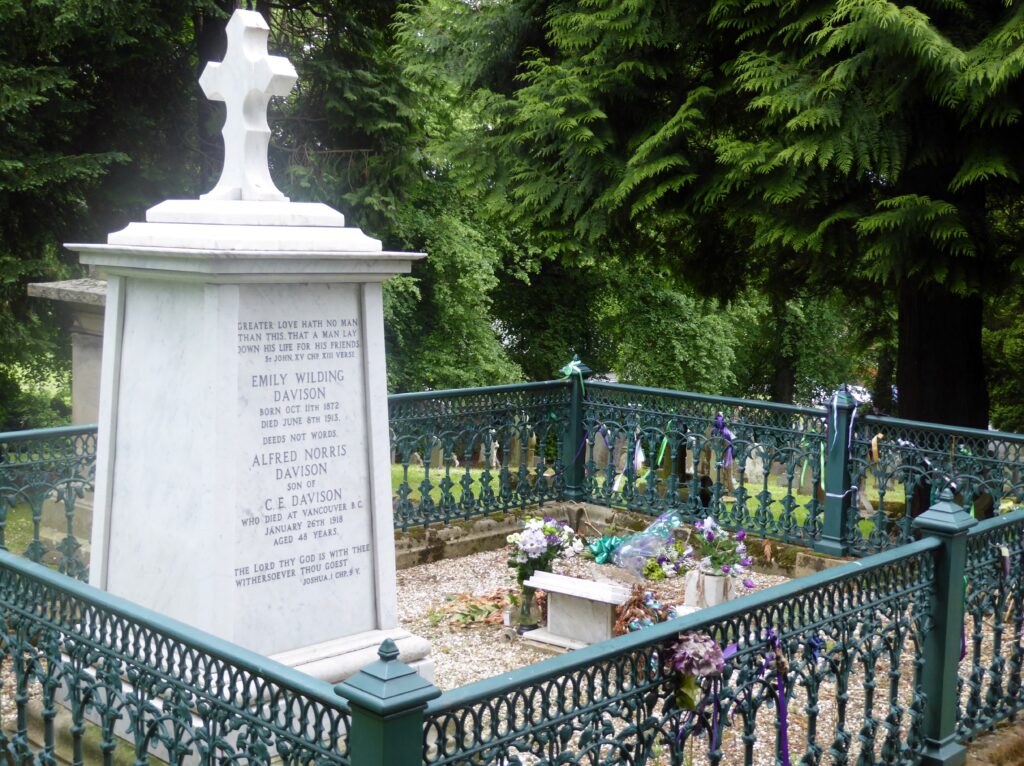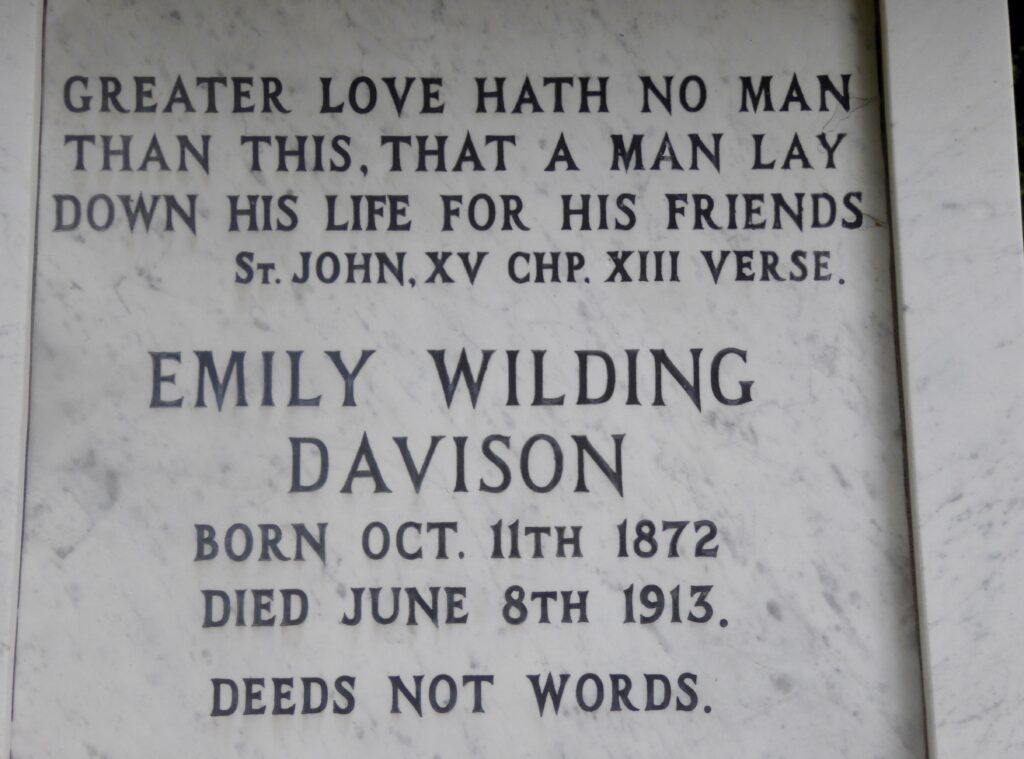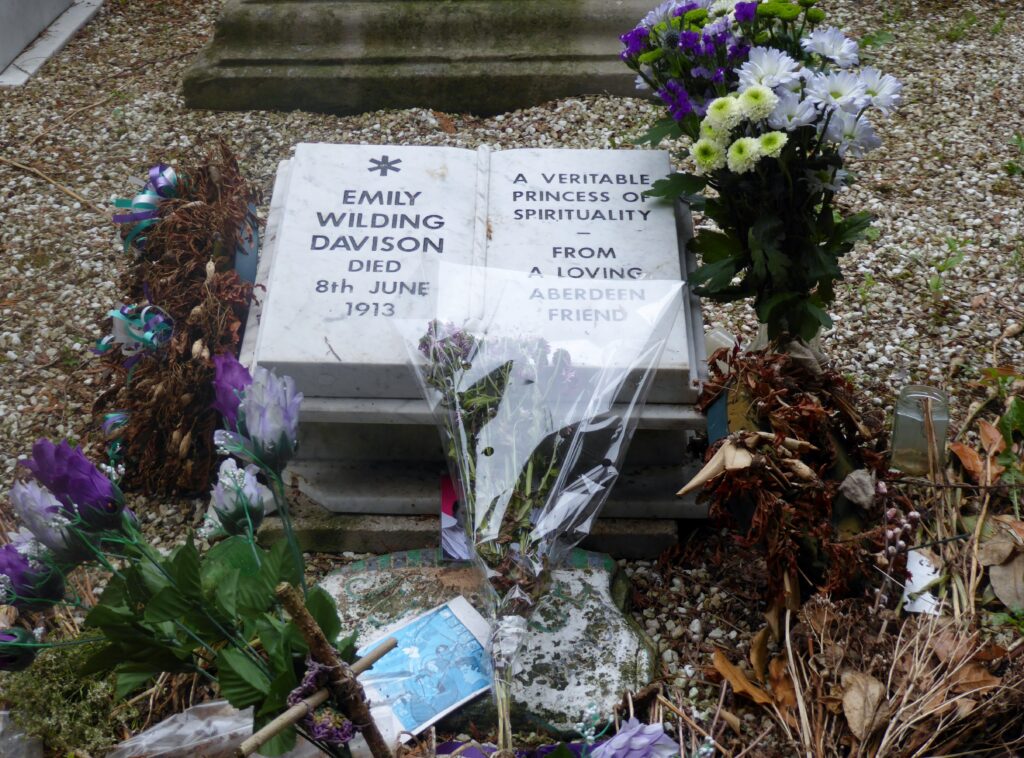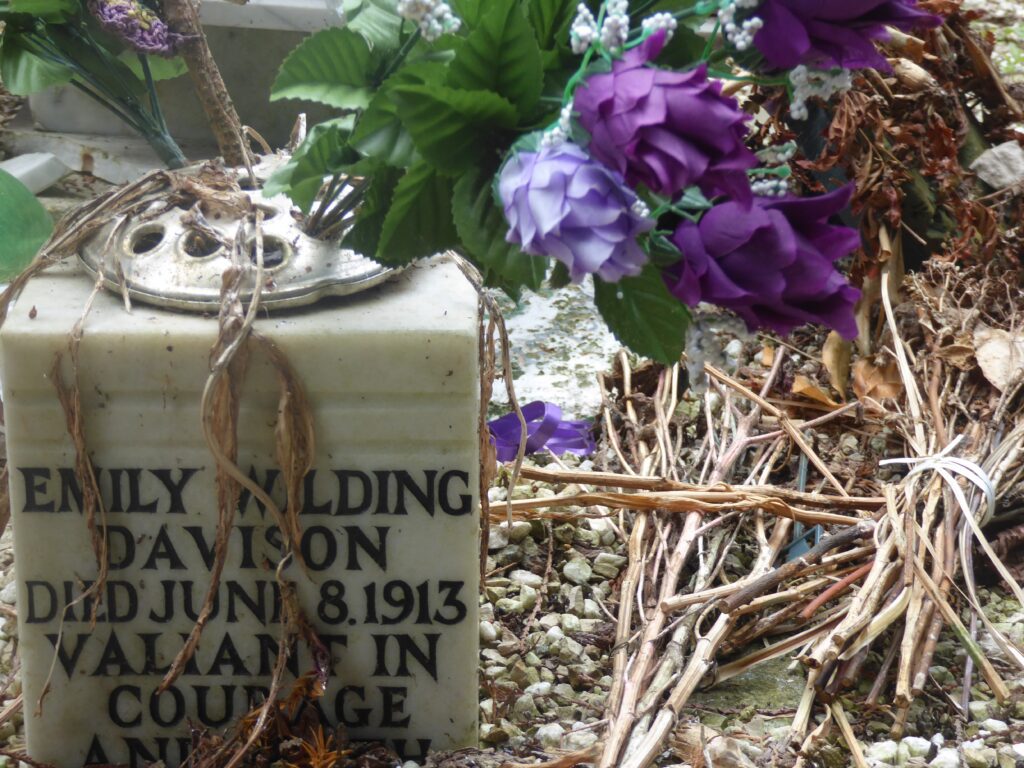One hundred and ten years ago, on the 4th of June 1913, Emily Wilding Davison suffered a fractured skull following a collision with George V’s horse, Anmer, at the Epsom Derby. She died four days later in a room hung with bunting in the green, white, and purple colours of the suffragette movement.
Emily had studied at Royal Holloway College, London, and St. Hugh’s Oxford where she had gained first class honours, but being female was not allowed to take a degree. In 1906 she had joined the Women’s Social and Political Union (WSPU). This militant wing of the female suffrage movement had emerged in 1903 after decades of peaceful lobbying by the law-abiding suffragists had failed to obtain voting rights for women. The WSPU embraced direct action, and Emily was at the forefront of this, disrupting political meetings from which women were barred, breaking windows and daubing slogans on the walls of buildings where these meetings were held.
In 1911 suffragettes boycotted the census, reasoning that, “If women don’t count, neither shall they be counted.” Some returned incomplete or “spoilt” forms covered in suffrage slogans. Others avoided being at home on the night of the census and held outdoor gatherings including a midnight picnic on Wimbledon Common. Emily hid overnight in a cupboard in the Palace of Westminster. Ironically when she was discovered she was recorded on the census as a “resident” of the House of Commons. In 1990 the Labour MP Tony Benn mounted a plaque in the cupboard commemorating her commitment to feminism and socialism.
But the consequences for the militant suffragettes were severe. They were arrested and faced solitary confinement in prison. When they went on hunger strike protesting the government’s refusal to classify them as political prisoners they were force fed. Rubber tubes inserted into their mouths or nostrils passed through their throats and oesophaguses to transmit liquid food to their stomachs. This painful process resulted in broken teeth, bleeding, vomiting, and the risk of regurgitated food passing into their lungs.
Emily was arrested nine times. She was imprisoned eight times and went on hunger strike seven times. She was force fed forty-nine times. On one occasion when she barricaded herself in her cell to avoid this abuse the cell window was broken, and a fire hose turned on her for fifteen minutes. By the time the door was wrenched open her cell was six inches deep in water.
In a further attempt to end the torture of force feeding she threw herself from one of the inside balconies of the prison. She wrote, “The idea on my mind was that one big tragedy may save many others.” She was severely injured but saved from death when she landed on the wire netting instead of the stone staircase. Force feeding continued.
Public disquiet eventually brought the practice to an end. Under the provisions of the The Prisoners (Temporary Discharge for Ill Health) Act 1913, commonly known as The Cat and Mouse Act, however the suffragettes were released from prison when hunger began to affect their health, only to be rearrested without trial to serve out their sentences once they had recovered.
On the day of the Epsom Derby, Emily had ducked under the railings and run into the path of the King’s horse. Film footage of the event shows her apparently reaching for the horse’s reins. She had not discussed her plans with anyone and left no note, so we cannot be certain of her intentions. She may have sought to attach the two suffragette banners which she was carrying to the horse’s bridle so that he crossed the line waving the suffragette flag. She may have decided to throw herself in front of the horse in a suicidal attempt to provide the WSPU with a martyr and to expose the abuses happening in prisons.
There had been the previous suicide attempt in prison, and in The Price of Liberty Manuscript she had written: “To lay down life for friends, that is glorious, selfless, inspiring! But to re-enact the tragedy of the Calvary for generations yet unborn, that is the last and consummate sacrifice of the militant! She will not hesitate even unto this last.” The coroner however rejected the possibility of suicide on the grounds that she carried in her purse a return train ticket to Victoria, was attending a suffrage event that evening, and had a diary full of appointments for the following week.
The press and the establishment ridiculed her actions, but for the WSPU and their supporters she was indeed a martyr. 6,000 women accompanied her coffin to the funeral service at St. George’s, Bloomsbury and 50,000 people lined the route. Afterwards her coffin travelled north to Morpeth in Northumberland where she was buried in the family plot in the churchyard of St. Mary the Virgin. Her headstone bears the suffragette watchword “Deeds Not Words.”





Emily’s friend, Mary Leigh (1885-1978 ), visited the grave every year taking with her one of the suffrage flags which Emily had carried on the fatal day. Later she carried the same flag on the first Campaign for Nuclear Disarmament march to Aldermaston in 1958.
Whatever her intentions Emily must have known the risk of stepping into the path of a racehorse moving at full gallop, and there is little doubt that she would willingly have given her life to ensure female suffrage “for generations (then) unborn.”
Female suffrage was not obtained on equal terms with men in Britain until 1928.
When Parliament seems a sordid place and many politicians at best meretricious and out of touch with the electorate, at worst criminal and cruel, remember Emily Wilding Davison died for our right to vote. And if with heavy hearts we fear that we can only cast our ballots for the lesser evil, we owe it to her at least to do that.
